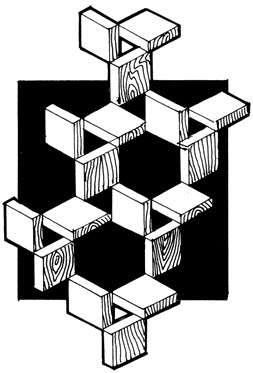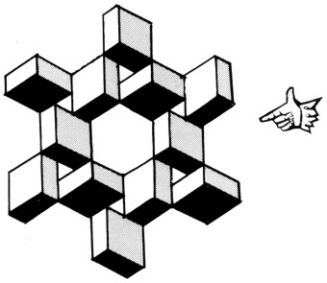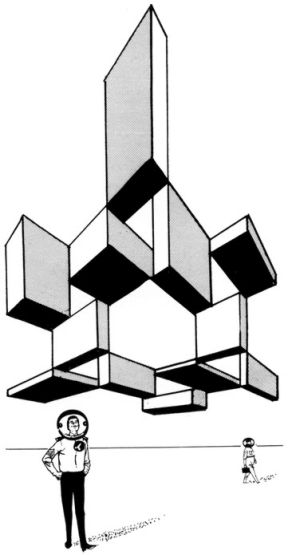
| Art Explanations #1 | HISTORY Page | Obituary Page | |
| ||||
when I tell them that Bradford plays a vital role in the international arts scene, but it’s true. Though if you’ve not heard of the Bradford International Print Biennale and are curious to see what it’s all about, you’ll have to wait until July 1976 for the next one. With my current interest in screen printing, I found the exhibition both a visual delight and a stimulating demonstration of contemporary print-making. So I am full of enthusiasm when I call on Lisa. Most of her possessions seem to be piled up outside the door of the flat but on negotiating the barricade I find she is not being evicted but merely succumbed to a mad impulse to paint her flat white... all over.
... where there appears to be steps at one end although the whole thing is obviously only the thickness of one step. I started playing about with it, using three of the figures to form a cube shape...
... and did a few variations, with the result that I decided to drop some of the detail to concentrate on the “pure” shape as a different illusion seemed to be emerging from these sketches. By making a “hole” in the centre of the slabs, I obtained a figure that looked 3-dimensional but obviously could not be realised as a solid object.
—Rubbish, says Lisa confidently; she picks up three paperbacks and tries to juggle them into appropriate positions, fails to do so, and retires baffled. I warm to my theme.
superimpose them, like this—and end up with a grid,
and hidden in there is this shape—our "impossible" object again...
This provides us with a handy module that can be linked up in all sorts of ways, producing convincing 3-dimensional structures. Like this unrealisable "Sculptural project"... ... or this “Space Platform”...
Oddly enough, the rules of perspective can be applied to these drawings and, if anything, make them even more impressively 3-dimensional...
Look what happens when we apply perspective distortion to the Platform...
|
 |












